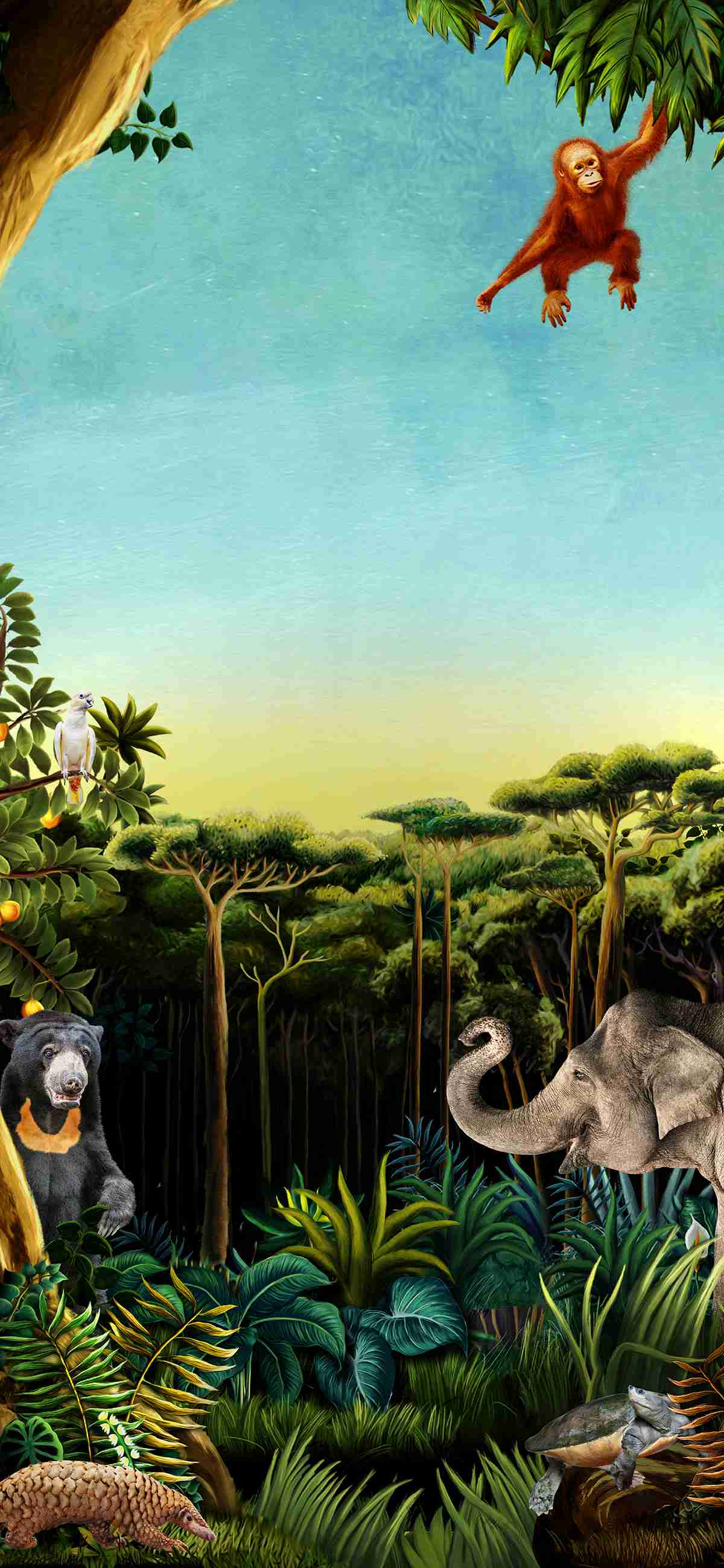Mandai Wildlife Group welcomed over 900 babies in 2023
20 Mar 2024Dr Cheng Wen-Haur, Deputy CEO and Chief Life Sciences Officer, Mandai Wildlife Group, said, “It is our privilege to watch these young animals grow and to be part of conservation efforts for the species under our care. Every new addition to our wildlife family is special, as each birth and hatching contributes towards nurturing healthy, sustainable populations of species under human care. We work closely with our counterparts from the international zoo community, sharing research and participating in breeding programmes towards this goal. Many of the species we breed also have significant impacts in preserving biodiversity and protecting wildlife.”
Of the 128 species that celebrated new arrivals in 2023, 19 are part of internationally managed breeding programmes, such as the European Association of Zoos and Aquaria’s (EAZA) Ex-Situ Programme. Such programmes are key in saving species from extinction, and Mandai Wildlife Group currently participates in over 160 programmes.
A Prolific Year for Singapore Zoo
The year started on a joyous note at Singapore Zoo in January, with the birth of a Celebes crested macaque, the fourth infant born to 18-year-old female Dewi. The young macaque is named Adi and can be seen at Primate Kingdom with his family, playing with coconut leaves and dipping in their pool on hot days. Found only in North Sulawesi in Indonesia, the Celebes crested macaque is among the world’s 25 most endangered primates, with fewer than 6,000 individuals left in fragmented habitats today. Mandai Wildlife Group contributes to the preservation of this species through its conservation arm, Mandai Nature which supports Indonesian-based conservation project, Selamatkan Yaki, on outreach and field projects to save the Celebes crested macaque in its natural habitat.
In early February, Singapore Zoo also celebrated the arrival of a pair of male red ruffed lemurs, born to second-time parents Bosco and Minnie who have been endorsed for breeding by EAZA’s Ex-Situ Programme. Housed at Gibbon Island with their parents and older twin siblings, the young tykes weigh approximately 2.6kg now and especially enjoy eating grapes. Red ruffed lemurs are critically endangered, threatened by illegal hunting, pet trading and habitat loss. Reproduction is also difficult since they only breed once a year, with females fertile for only one out of the few days they are sexually receptive, so the twin births mark a special milestone in the conservation of their species.
The year also saw several unprecedented hatchings for herpetology at the Singapore Zoo. These include the first purebred green and black poison dart frogs to hatch here, as well as the first Roti snake-necked turtle hatchling.
New Hatchlings at Bird Paradise
Bird Paradise, which opened its doors to visitors in May 2023, recorded impressive arrivals in its inaugural year. Among the new chicks were first-time hatches for threatened birds such as the Madagascar crested ibis, as well as hatches from species like the Brazilian teal and Vietnam pheasant. The Negros bleeding-heart dove, endemic to the Philippine Island of Negros, also welcomed eight new chicks, bringing the total hatchlings to 16 since Bird Paradise and Mandai Nature jointly partnered conservation organisation, Talarak Foundation Inc, to set up a conservation breeding programme for this rare species. Bird Paradise is the first and only zoological institution outside the Philippines to hold the Negros bleeding-heart dove, and progenies will eventually be released into natural habitats in the Philippines to restore the wild population.
Just before the year ended in November, Bird Paradise also welcomed an American flamingo chick, its first in over 25 years. The young flamingo, still sporting its greyish white down feathers, is feeding well and can be seen among its flock at Hong Leong Foundation Crimson Wetlands. Four straw-headed bulbuls and six Bali myna chicks also joined the new arrivals at Bird Paradise, as part of Mandai Nature’s ongoing collaborations with regional conservation partners to boost ex situ and in situ conservation efforts for globally threatened avian species.
Anais Tritto, Avian Curator, Mandai Wildlife Group, said, “The aviaries at Bird Paradise were designed to be as naturalistic as possible to encourage breeding. The birds adapted to their new environment immediately, and we observed nesting behaviours in all the aviaries soon after we moved them from Jurong Bird Park to their new home here. Our first year has been incredibly memorable and fruitful, with so many successful first-time achievements for species of high conservation value. Our avian care team has done us proud, and we look forward to setting more milestones in avian conservation as Bird Paradise continues to grow.”
Other Special Babies
Last year also heralded the arrival of many more crowd charmers and young stars. Goodfellow’s tree kangaroo couple, Makaia and Nupela, proudly welcomed their second joey Susu, whose name means “milk” in Tok Pisin, a Papua New Guinean language, as well as in the local Malay language. Born the size of a jellybean in April, Susu has since outgrown his mother’s pouch, and just like her, is a fussy eater. Nupela is a doting mother who was “match-made” with Makaia by the World Association of Zoos and Aquarium’s (WAZA) Global Species Management Plan and has raised both her joeys successfully with minimal support from her keepers.
The year was also a bountiful one for the African painted dogs, who added a litter of eight to their growing pack in September. At six months old, the new pups weigh in at 11kg, approximately half the size of the adults, and spend playtime on branches. Over at River Wonders, a female calf was born to Eva, the largest female West Indian manatee at the Amazon Flooded Forest. Born in June, the calf measured 1.3m and was bottle fed by her keepers as no suckling behaviours were observed. She has since grown to 1.6m and just like the other adult manatees, enjoys a variety of vegetables and high fibrous biscuits.


